湖南衡阳祝圣寺罗汉堂原有五百罗汉雕像,全部用青石镌刻,嵌在左右墙壁上,是南岳文化宝库中的一颗明珠。可惜在十年动乱中,罗汉大部分被毁,现仅存五百罗汉像拓本。此本为清末拓本。祝圣寺坐落在南岳镇东街,距南岳庙半里许,是南岳六大佛教丛林之一。1983年被国务院确定为汉族地区佛教全国重点寺院。唐代高僧承远(公元712-802)在这里创建佛教寺院,名弥陀台,他的著名弟子法照(?-777),初居庐山,结西方道场。大历二年(767)慕承远名来南岳,师事承远十二年。大历末年(779)奉诏入长安,入皇宫教宫人五会念佛(五百人为一会),唐代宗奉为国师,传教天下。法照向代宗极力称赞其师承远有异德,代宗南向而礼之,度不可征,乃名其居日“般舟道场”,用尊其位。承远另一著名弟子日晤,十三岁出家,随承远长期侍勤,唐肃宗乾元元年(758),诏天下名山置大德七人,长讲戒律,日晤获选首位。他在南岳登坛传戒37年,每年度僧千人,称盛一时。他在旧址上建一精室命名为“般舟台”,专修念佛三昧,世称“般舟和尚”。唐德宗贞元年间(785-805),诏为“弥陀寺”。从而,由弥陀台、般舟道场到弥陀寺,就成了名登朝廷,声动公卿的天下名寺。祝圣寺主体建筑共有五进,分为天王殿、大雄宝殿、说法堂、方丈室、罗汉堂。东汉时期,随着佛教的传入,佛教题材的绘画应运而生。至唐永徽四年(654年)玄奘译出《大阿罗汉难提菩多罗所说法住记》后,对罗汉之崇拜逐渐“普及”,开始出现雕塑罗汉像,唐代的王维、五代的贯休、宋代的张玄、清代的姚宋等都曾创作了一些宣扬罗汉的艺术作品,但存世极少。五百罗汉的事迹,诸经说法不一,大致可分为佛在世时的五百罗汉与佛灭后的五百罗汉。佛在世时的五百罗汉是指佛所渡化的比丘群(每每有五百之数)。也可说佛在世时,所渡化的最有成就的五百比丘。另一说,佛在世时曾渡化了五百位盲乞人,他们最后也都成就了阿罗汉果。佛灭后的五百罗汉,据《舍利弗问经》,当指弗沙秘多罗王毁灭佛法后,重兴圣教的五百罗汉。另外,在佛教史上流传着四次的结集大事,每次都由大阿罗汉们担当大任,其中第一次为佛灭度迦叶尊者与五百阿罗汉最初结集三藏,第二次是七百罗汉,第三、第四次也都是五百罗汉。现在一般认为,五百罗汉均为释迦牟尼佛的弟子,佛灭后,他们整理了佛的教义,并广为传播,因而取得了小乘教的最高地位——罗汉的称号。五百罗汉创作题材属于多体罗汉创作题材之一,我国关于五百罗汉的故事,早在东汉随着“佛说兴起行经”开始流传,两晋以来,“佛五百弟子自说本起经”、“增一阿含经”等有关经典的相继译出,五百罗汉的事迹随着这些佛教经典而广为流传,但是影响美术创作却相当晚。盛唐的敦煌莫高窟的壁画中,有许多“涅槃变相”的题材,画中有无数悲戚的佛弟子们可以说是我国早期的罗汉形象。而龙门石窟中却刻出了二十五体和二十九体的罗汉。中唐的寺壁中也多有传法弟子或六十罗汉等题材。可以说这些多体罗汉,开了后来五百罗汉创作的先河。五代时期,兴起了十六罗汉创作的风气,同时开始了五百罗汉的创作,现存最早的五百罗汉形象就是五代时期的石窟造像,造像风格上有形式化的倾向。两宋时,五百罗汉创作进入辉煌期,无论绘画还是雕塑,五百罗汉创作均力求捕捉罗汉内心之感情与神韵,且融合禅意与文趣,风貌独特,生动感人。明清以降,五百罗汉流于摹擬和因袭,少有创意,但在艺坛上仍占有一席之地。中国佛教的五百罗汉,虽名号不同,神态各异,但却有一个共同点:罗汉们被视为力量和吉祥的象征,几乎家喻户晓,有口皆碑。我国的许多寺庙也不惜工本精心塑造五百罗汉像,如北京碧云寺、成都宝光寺、武汉归元寺、苏州西园寺和寒山寺、上海龙华寺、广州华林寺、昆明筇竹寺及重庆吉星寺等。五百罗汉造像形式有泥塑、铜铸、雕刻、绘制、纸褙等。江苏常州天宁寺碑刻是依据宋代杭州净慈寺的五百罗汉塑像绘画摹勒上石刻成的,其像神形兼备、惟妙惟肖、栩栩如生,惜在清咸丰年间毁于兵燹,仅有拓片流传民间。清光绪年间,南岳祝圣寺高僧释心月,据天宁寺传世碑刻拓片摹刻于石,而此碑也于“文革”中毁弃。
The original Arhat Hall of Zhusheng Temple in Hengyang, Hunan, has 500 Arhat statues, all carved in blue stone, embedded in the left and right walls, which is a pearl in the cultural treasure house of Nanyue. Unfortunately, most of the Arhats were destroyed during the ten years of turmoil, and only 500 rubbings of Arhats still exist. This is a rubbings in the late Qing Dynasty. Zhusheng Temple is located in the East Street of Nanyue Town, half a mile away from Nanyue Temple, and is one of the six Buddhist jungles in Nanyue. In 1983, it was identified by the State Council as a national key Buddhist temple in the Han nationality region. Chengyuan (712-802 A.D.), an eminent monk of the Tang Dynasty, founded a Buddhist temple here, which was named Amitabha. His famous disciple Fazhao (? – 777), first lived in Lushan Mountain and married the Western Taoist Temple. In the second year of Dali (767), Mu Chengyuan came to Nanyue and learned from him for twelve years. In the last year of the Dali calendar (779), he was ordered to go to Chang’an to teach the five members of the imperial palace to chant Buddha (five hundred people for a while). In the Tang Dynasty, he was worshipped as a national teacher and preached to the world. Fazhao strongly praised to Daizong that his apprenticeship was far from perfect. Daizong made a ritual toward the south, and the degree was not collectable. It was named “Banzhou Taoist Temple” in Juri to respect his position. Ri He, another famous disciple of Chengyuan, became a monk at the age of 13. He served with Chengyuan for a long time. In the first year of the Qianyuan reign of Emperor Suzong of the Tang Dynasty (758), he ordered seven famous mountains in the world to have great virtues and long preach the precepts. Ri He was elected the first. He has been preaching in the Southern Mountain Altar for 37 years, with thousands of monks every year, which is called the peak. He built a refined room on the old site and named it “Bangzhou Platform”, specializing in chanting Buddha Samadhi, which is known as “Bangzhou Monk”. During the Zhengyuan period (785-805) of Emperor Dezong of the Tang Dynasty, the imperial edict was “Mituo Temple”. Thus, from the Mituo Platform, the Banzhou Taoist Temple to the Mituo Temple, it became a famous temple in the world, famous in the imperial court and famous in the public. The main building of Zhusheng Temple has five entrances, including the Heavenly King Hall, the Mahavira Hall, the Lecture Hall, the Abbot’s Room and the Arhat Hall. In the Eastern Han Dynasty, with the introduction of Buddhism, Buddhist paintings emerged at the historic moment. In the fourth year of Yonghui in the Tang Dynasty (654), after Xuanzang translated the “Living Records of the Great Arhat Nanti Bodhara”, the worship of Arhat gradually became “popular”, and sculpture of Arhat began to appear. Wang Wei of the Tang Dynasty, Guan Xiu of the Five Dynasties, Zhang Xuan of the Song Dynasty, and Yao Song of the Qing Dynasty all created some works of art to promote Arhat, but few of them survived. The stories of the five hundred Arhats can be roughly divided into the five hundred Arhats when the Buddha was alive and the five hundred Arhats after the Buddha died. The five hundred arhats in the Buddha’s lifetime refer to the bhikkhu group (usually five hundred) that the Buddha has transformed. It can also be said that when Buddha was alive, he was the most successful monk. On the other hand, when the Buddha was alive, he had saved 500 blind beggars, and all of them finally achieved Arahango. The five hundred arhats after the destruction of the Buddha, according to the Sutra of Sariputtra, should refer to the five hundred arhats who revived the holy religion after the destruction of Buddha dharma. In addition, there are four gathering events in the history of Buddhism, each of which is undertaken by the Great Arhats. For the first time, the Buddha killed the Buddha and 500 Arhats first gathered three Tibetan, for the second time, 700 Arhats, and for the third and fourth times, 500 Arhats. Now it is generally believed that the five hundred Arhats are all disciples of Sakyamuni Buddha. After the Buddha was destroyed, they sorted out the teachings of Buddha and spread them widely, thus obtaining the title of Arhat, the highest position of Hinayana Buddhism. The creation theme of the five hundred Arhats is one of the multi Arhats creation themes. The story of the five hundred Arhats in China began to spread as early as the Eastern Han Dynasty with the “rise of Buddhist doctrines and the practice of scriptures”. Since the two Jin Dynasties, the classics such as “the five hundred disciples of the Buddha began to speak the scriptures” and “the increase of one Ahan scripture” have been translated one after another. The deeds of the five hundred Arhats have been widely spread with these Buddhist classics, but it was quite late to affect art creation. In the murals of Mogao Grottoes in Dunhuang in the flourishing Tang Dynasty, there are many themes of “Nirvana in disguise”, and countless sad Buddhist disciples in the paintings can be said to be the early images of Luohan in China. In Longmen Grottoes, however, twenty-five and twenty-nine Arhats are carved. In the middle Tang Dynasty, there were also many themes in the temple walls, such as disciples of Dharma teaching or sixty Arhats. It can be said that these multi-body Arhats started the creation of the later 500 Arhats. During the Five Dynasties, the atmosphere of creation of the Sixteen Arhats rose, and the creation of the Five Hundred Arhats began at the same time. The earliest existing images of the Five Hundred Arhats were grotto statues in the Five Dynasties, with a tendency to formalize their style. In the Song Dynasty and the Song Dynasty, the creation of 500 Arhats entered a brilliant period. No matter in painting or sculpture, the creation of 500 Arhats sought to capture the feelings and verve of Arhats, and integrated Zen and literary interest, with unique and vivid features. Since the Ming and Qing Dynasties, 500 Arhats have been imitators and imitators with little creativity, but they still have a place in the art world. Although the five hundred Arhats of Chinese Buddhism have different names and expressions, they have one thing in common: they are regarded as symbols of strength and auspiciousness, and are almost universally known. Many temples in China also spare no effort to create 500 Arhats, such as Beijing Biyun Temple, Chengdu Baoguang Temple, Wuhan Guiyuan Temple, Suzhou Xiyuan Temple and Hanshan Temple, Shanghai Longhua Temple, Guangzhou Hualin Temple, Kunming Qiongzhu Temple and Chongqing Jixing Temple. The five hundred Arhat statues are in the form of clay sculpture, copper casting, sculpture, drawing, paper stick, etc. The inscriptions on the Tianning Temple in Changzhou, Jiangsu Province were carved on the basis of the painted sculpture of five hundred Arhats in the Jingci Temple in Hangzhou in the Song Dynasty. Their images are both divine and lifelike. They were destroyed in the war during the Xianfeng period of the Qing Dynasty, and only rubbings were spread among the people. During the reign of Guangxu in the Qing Dynasty, the eminent monk of the Nanyue Zhusheng Temple, Shi Xinyue, was copied into stone according to the inscription of the Tianning Temple, which was also destroyed during the “Cultural Revolution”.

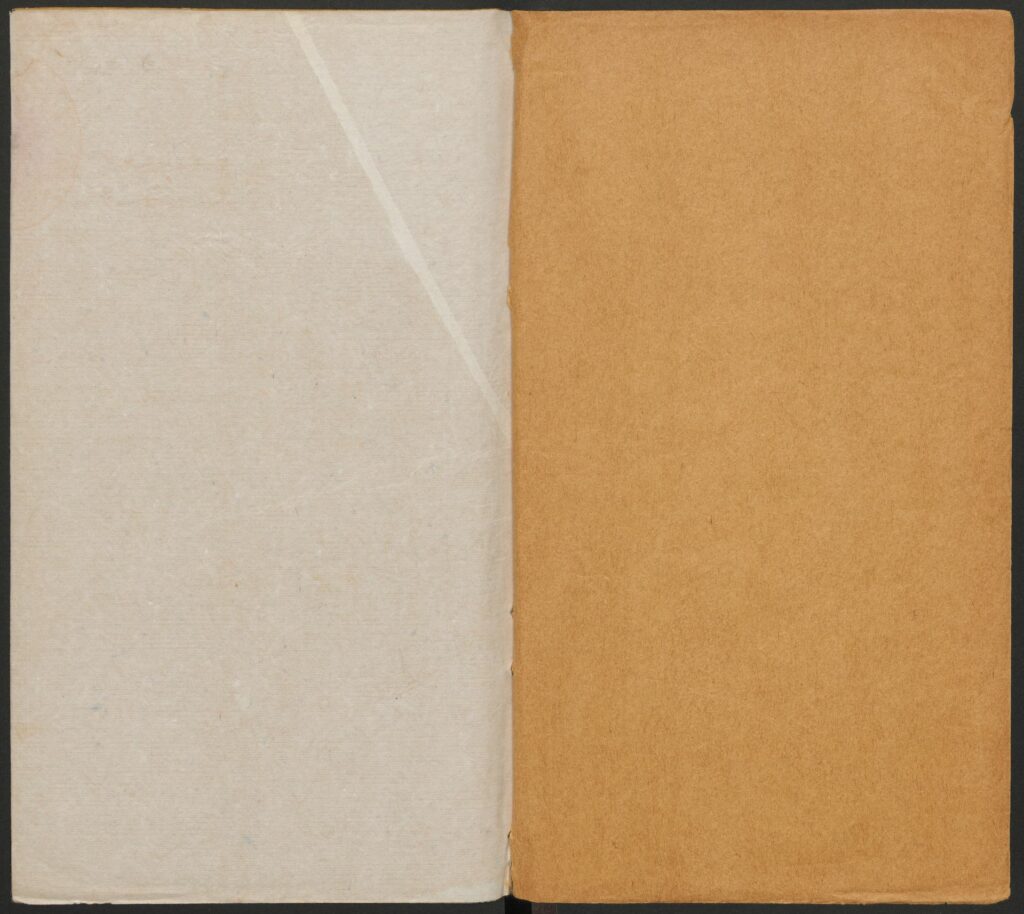












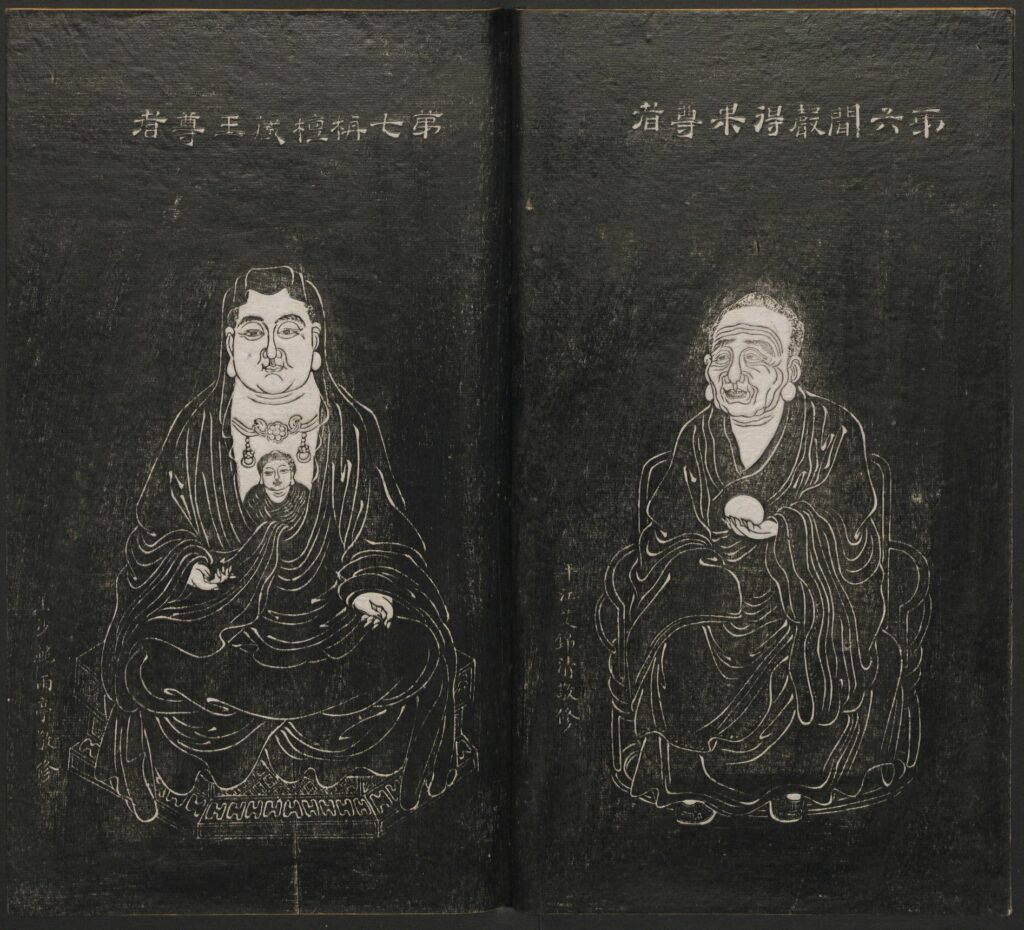
















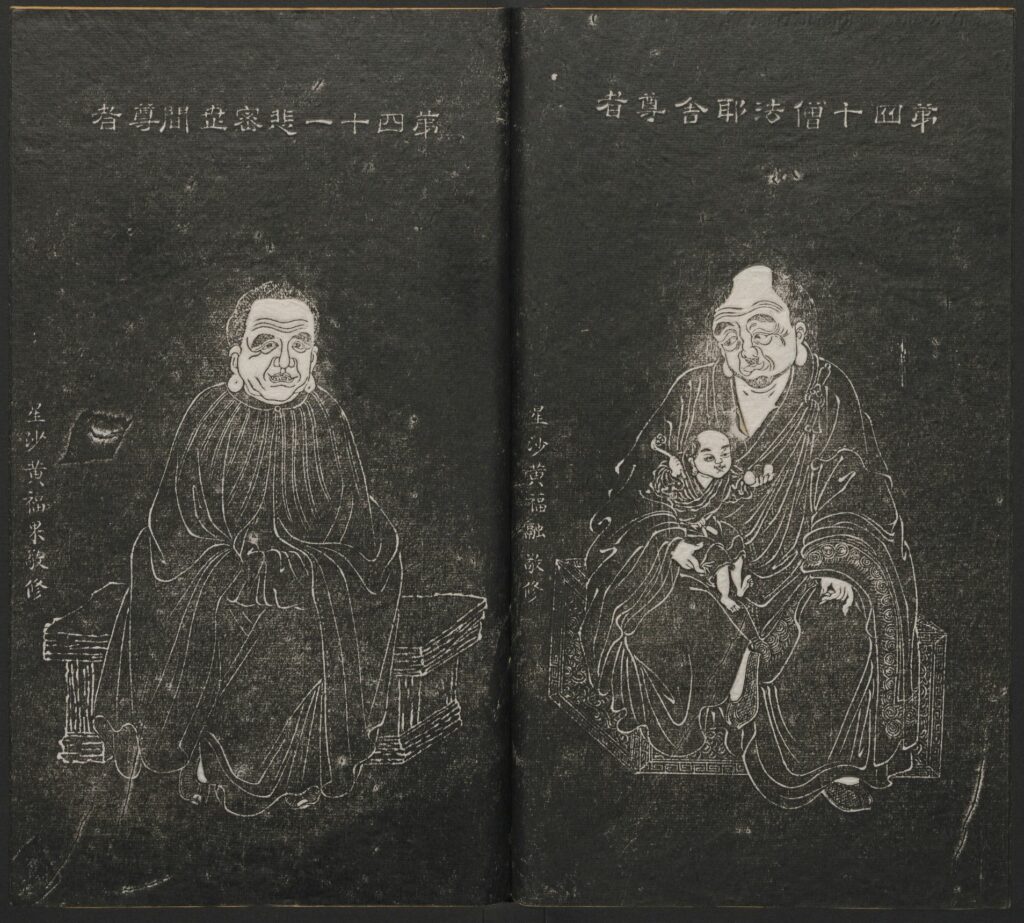



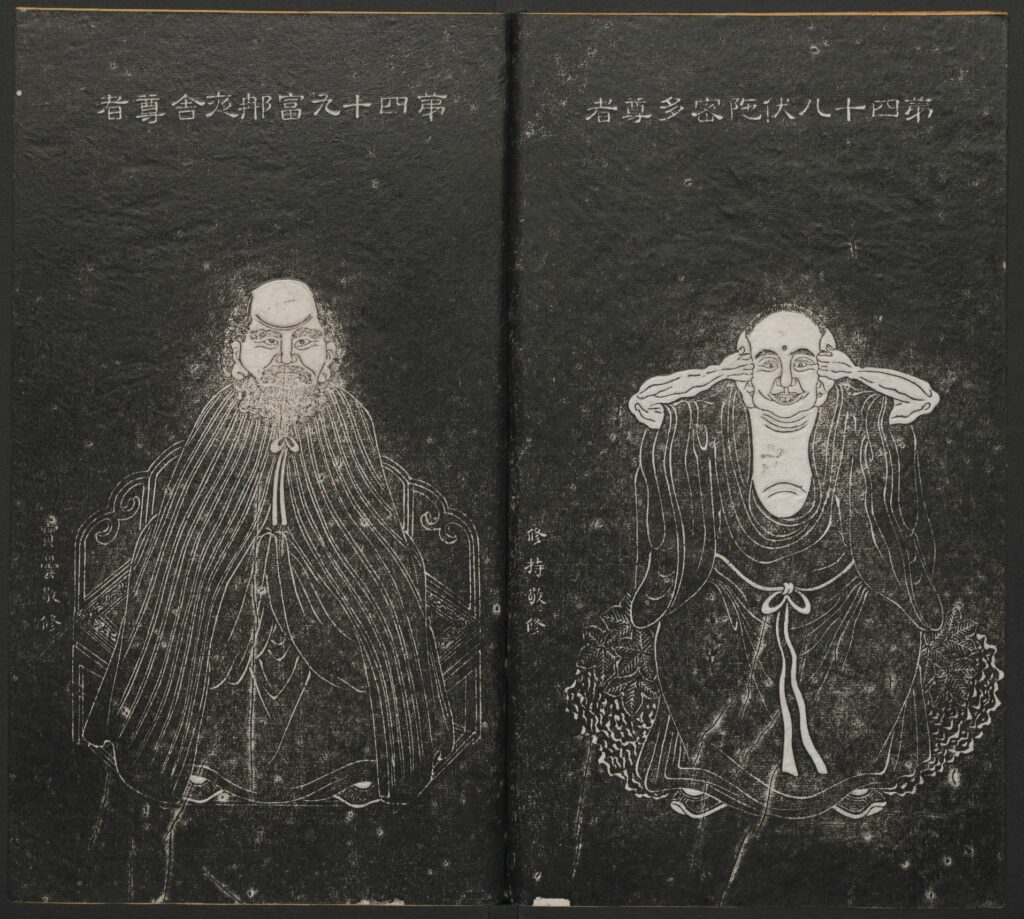
















































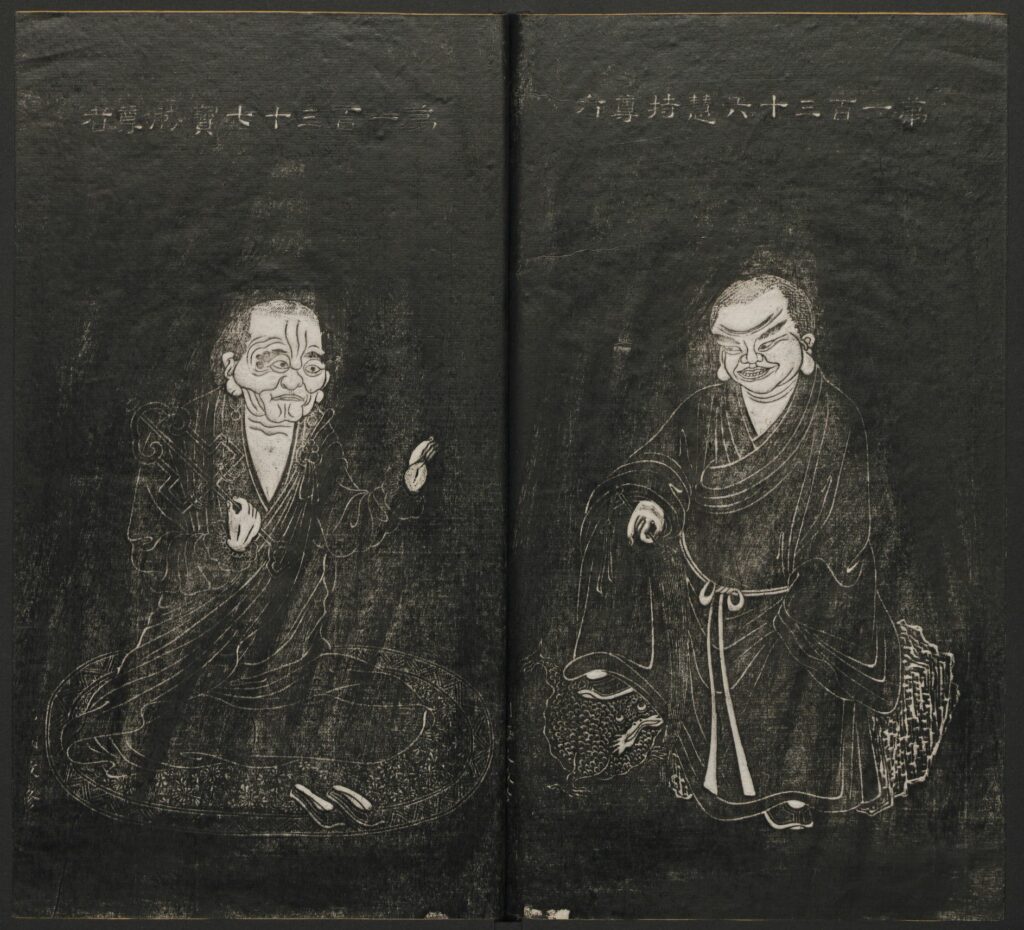



























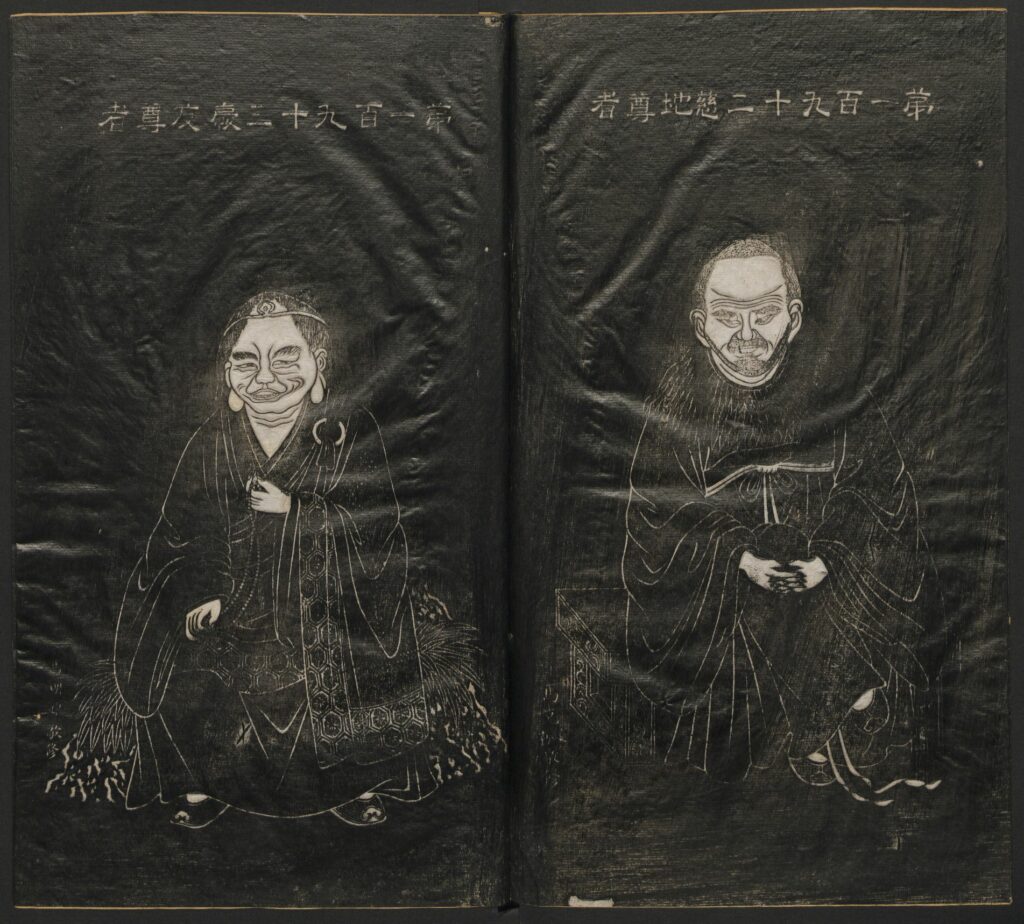










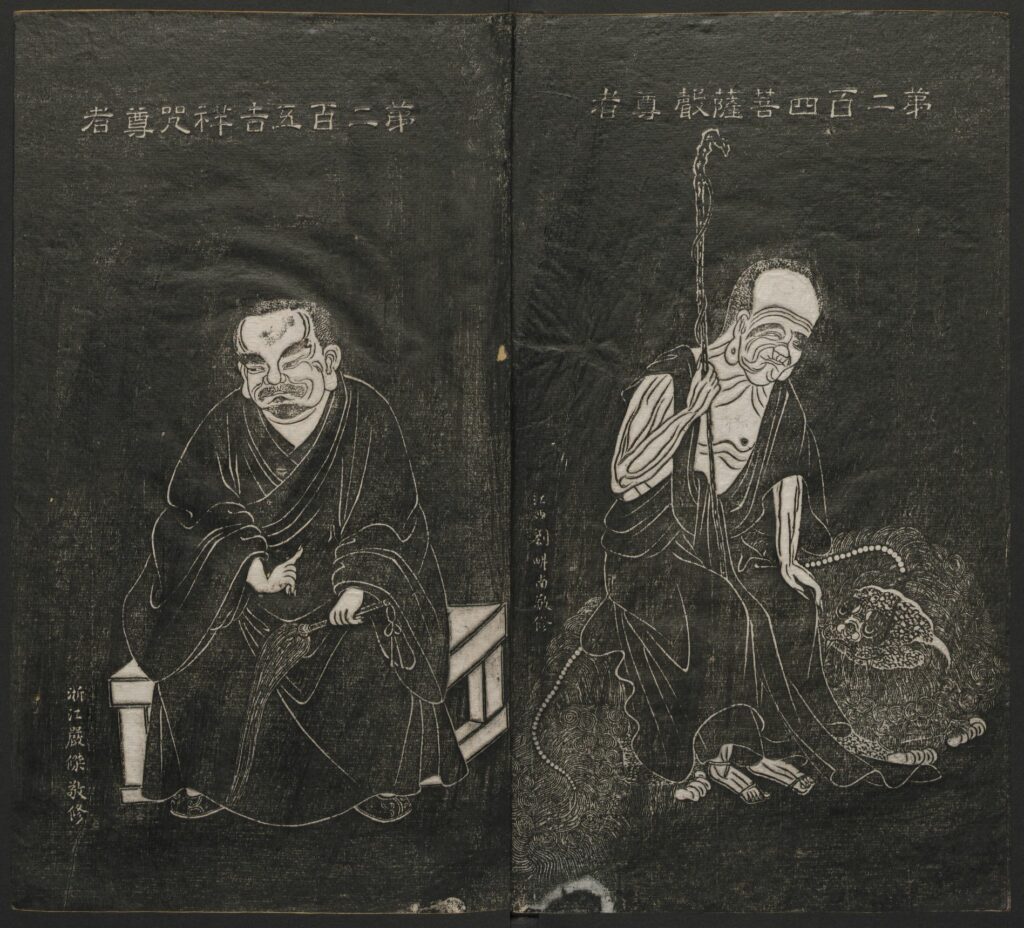


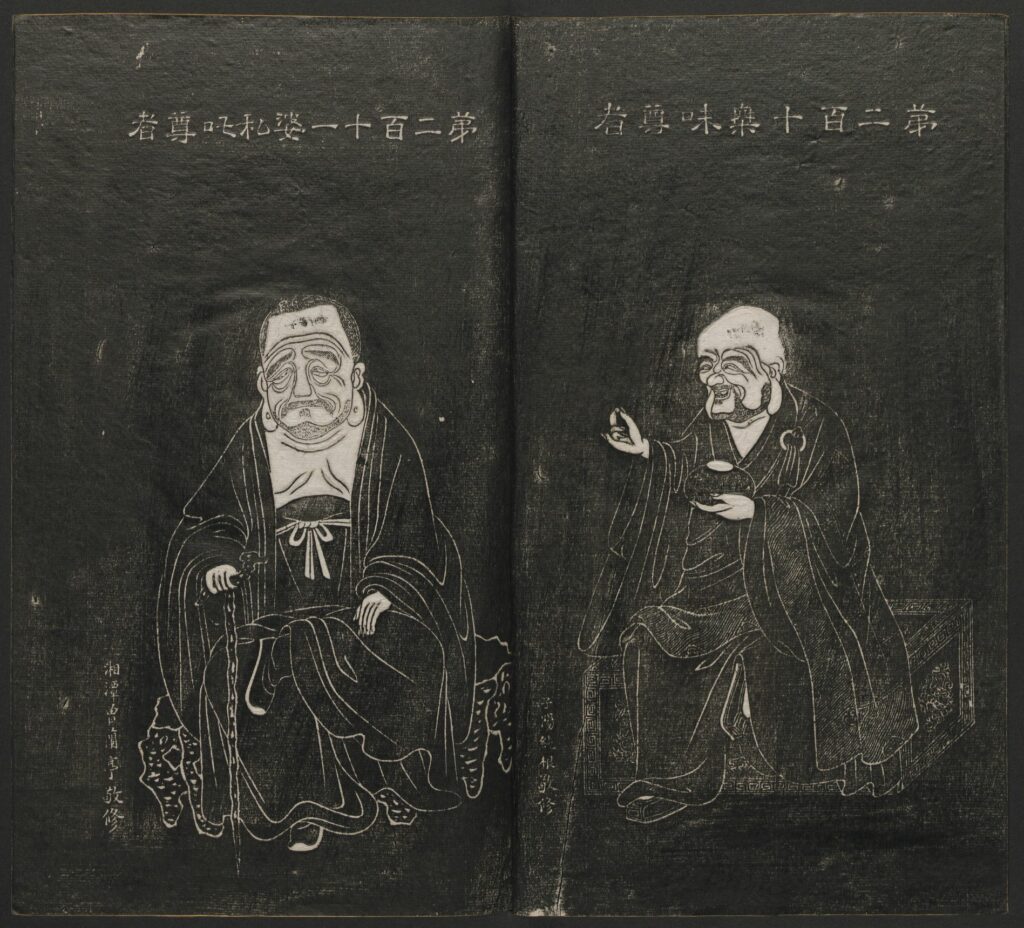


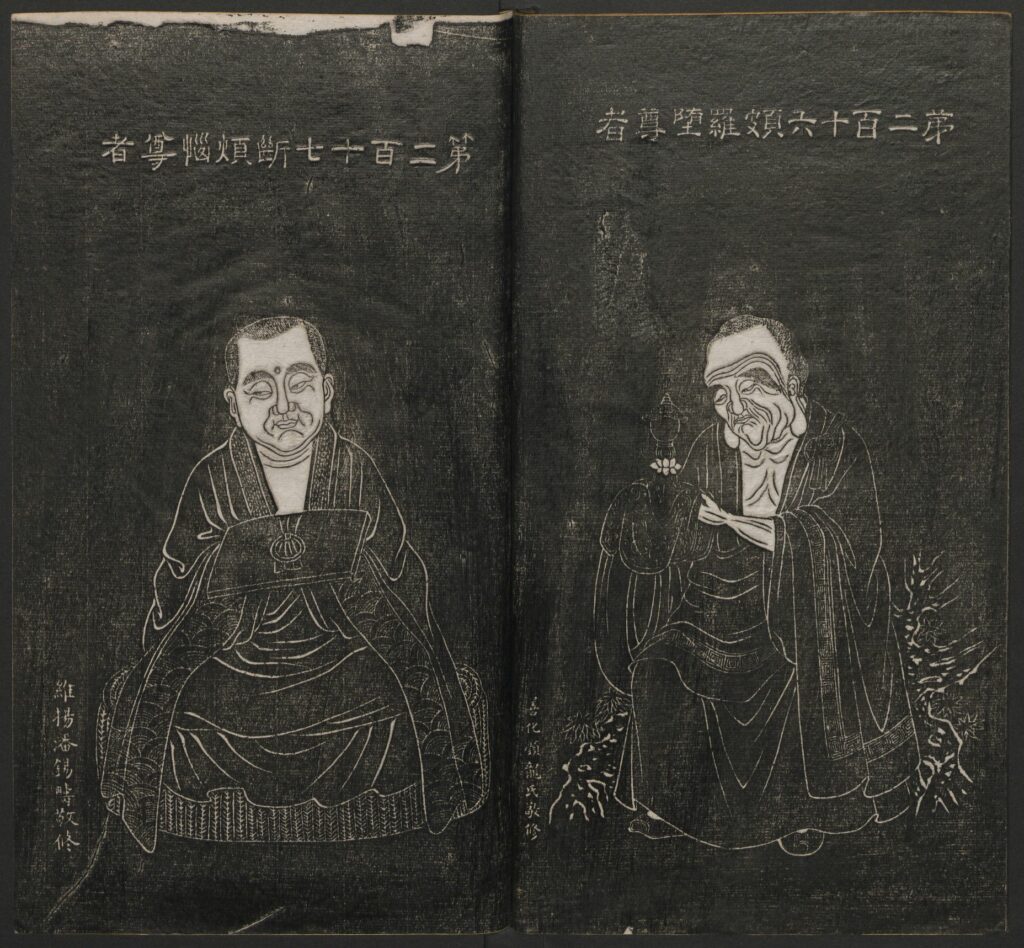
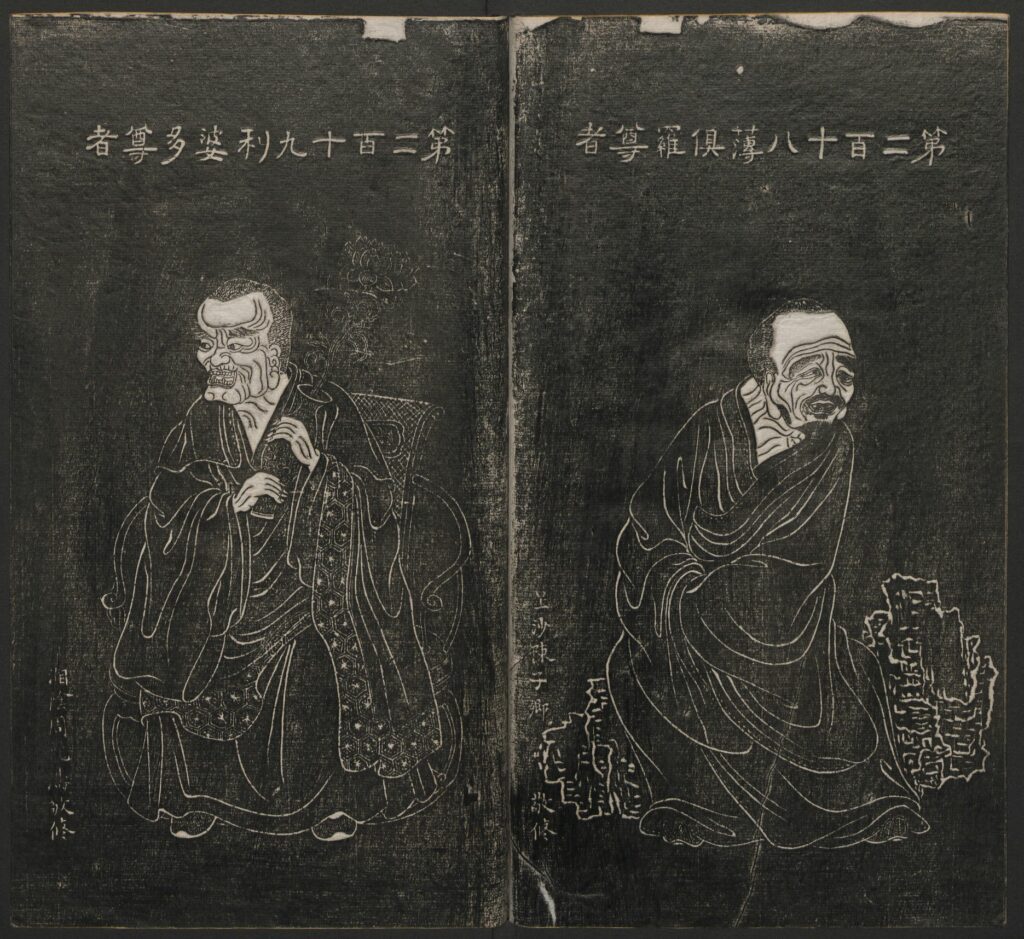








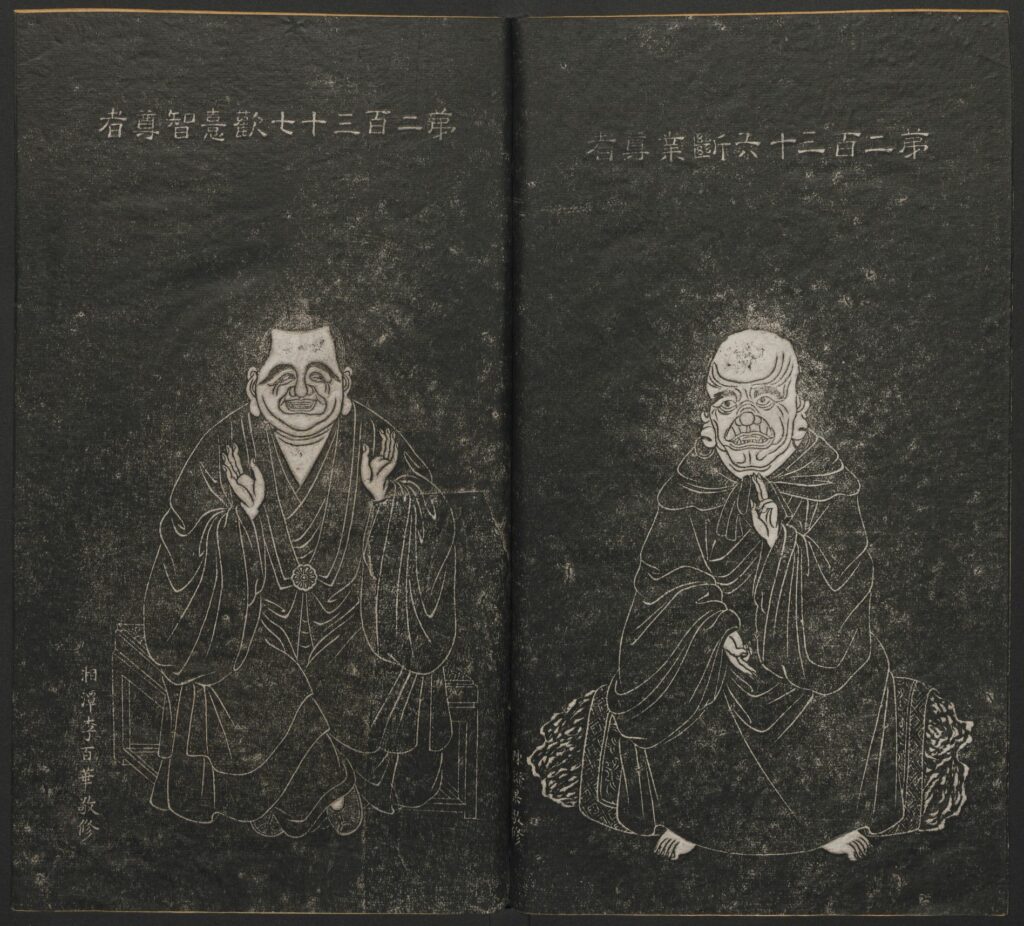
























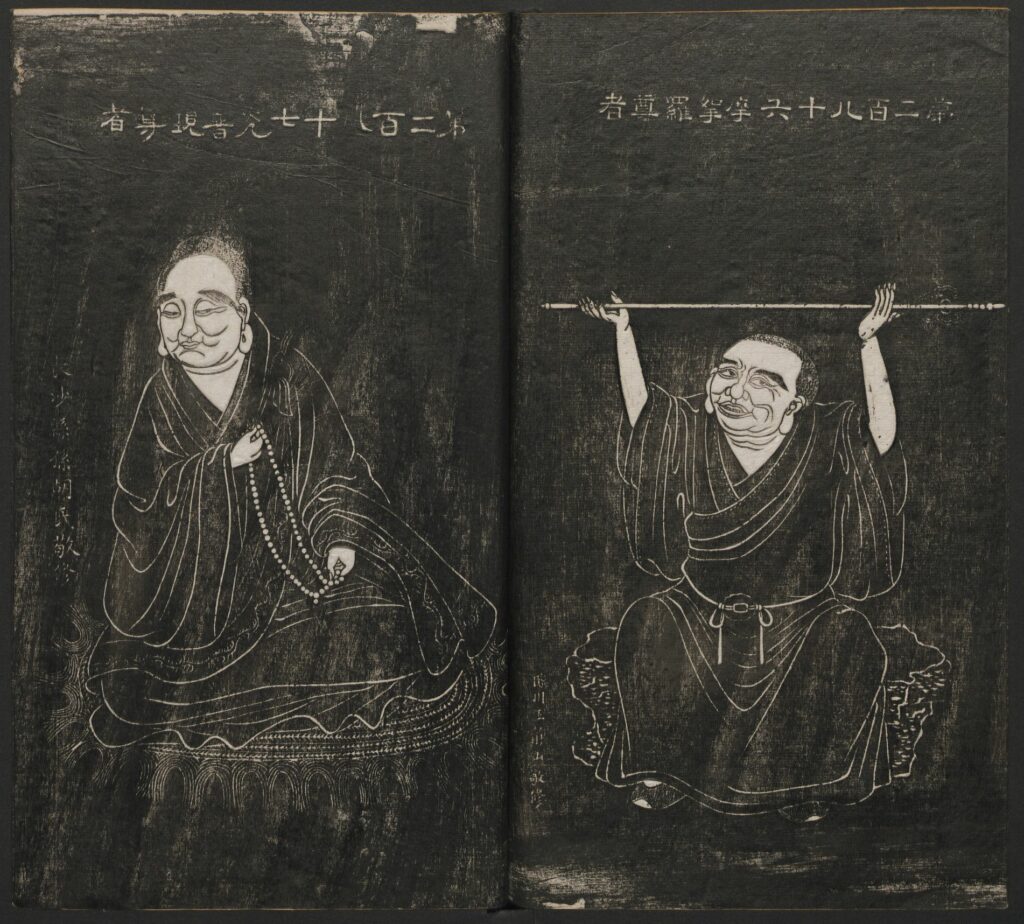

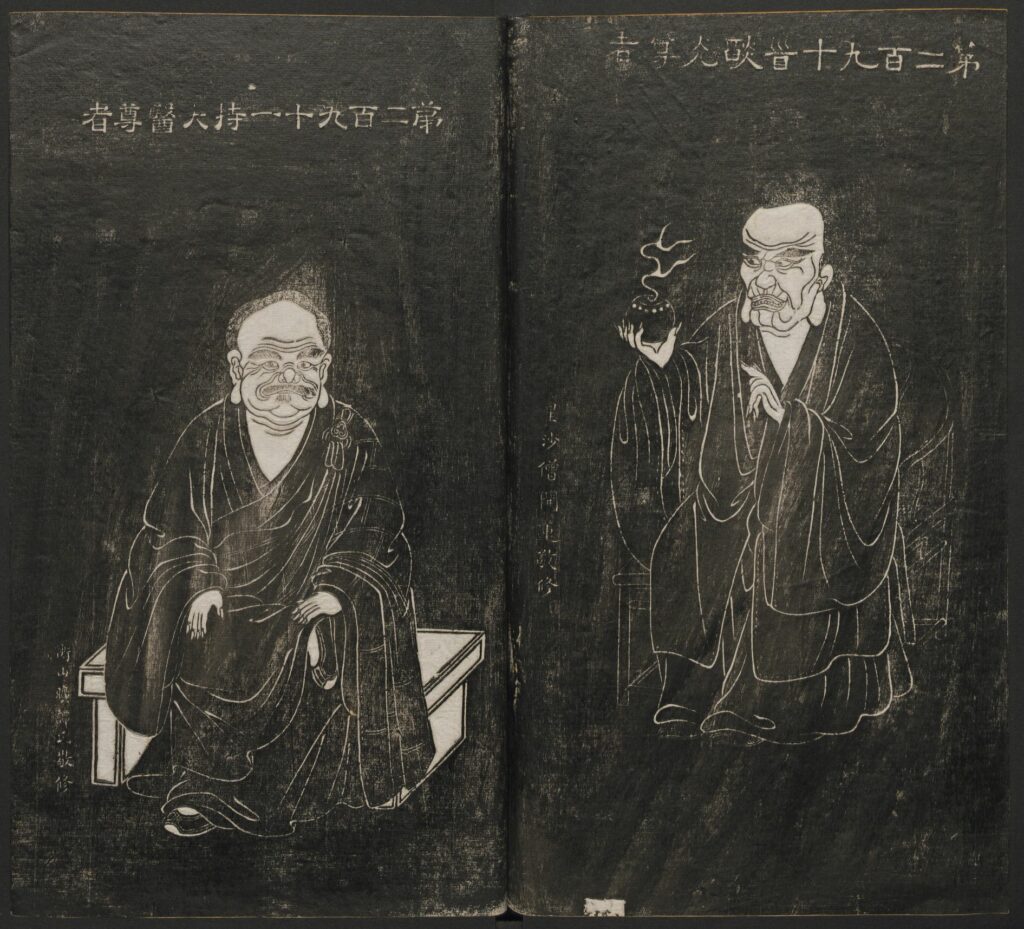
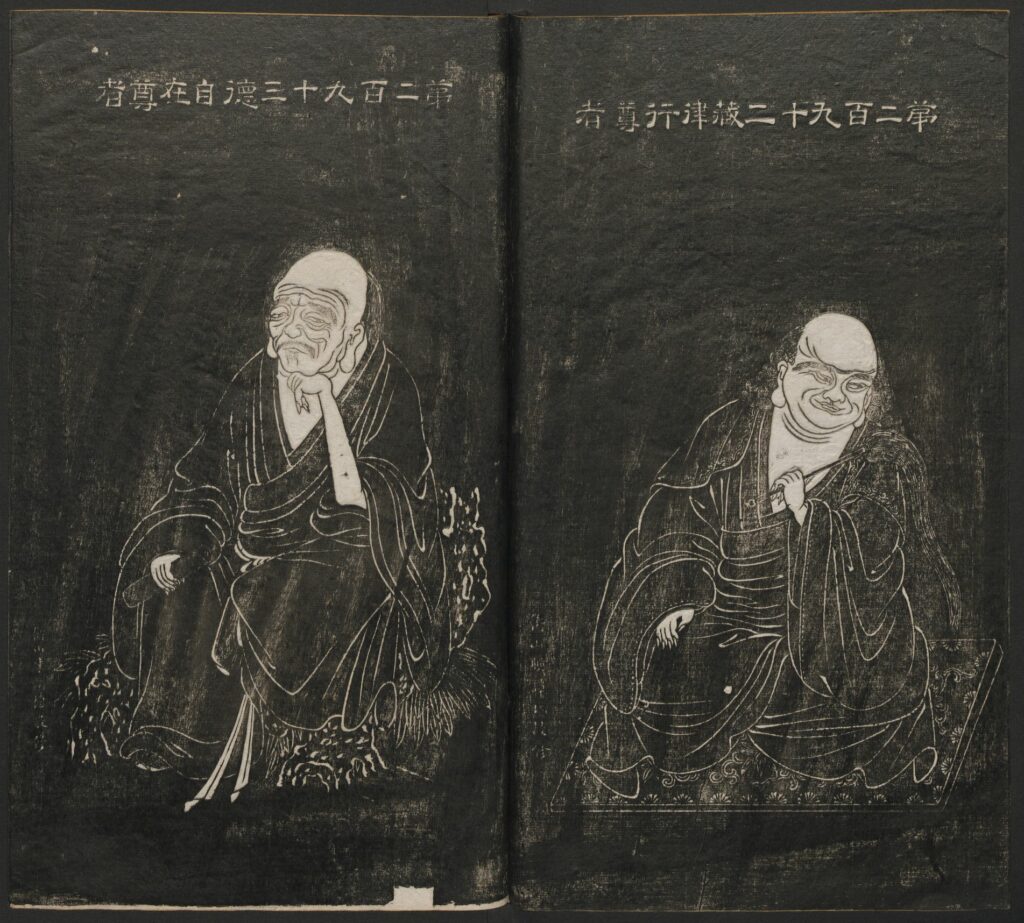











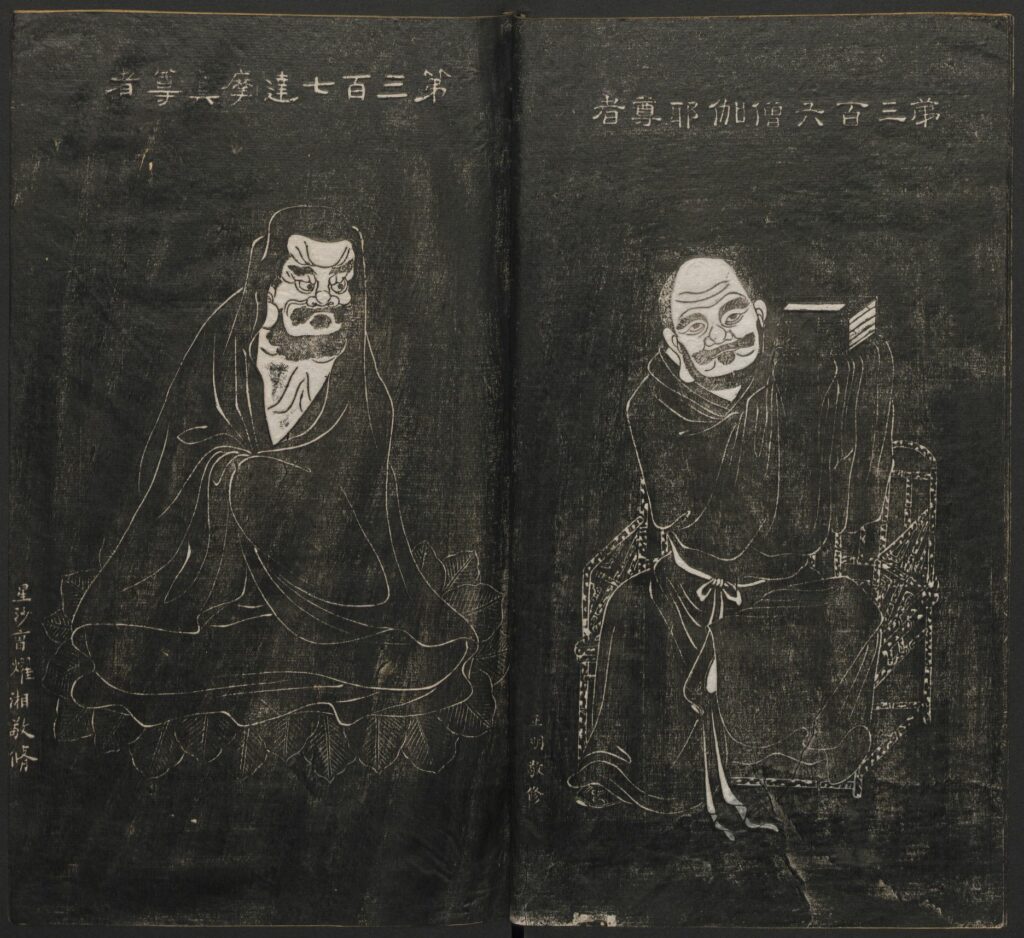
















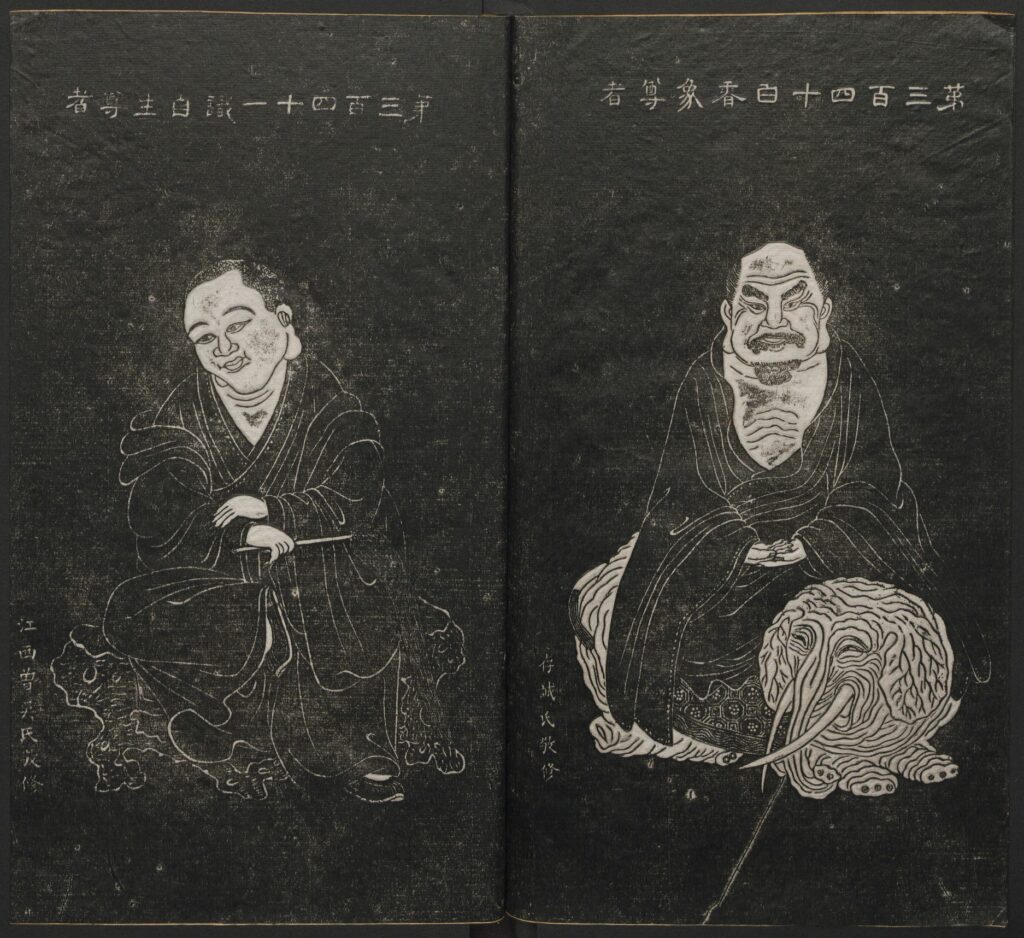
















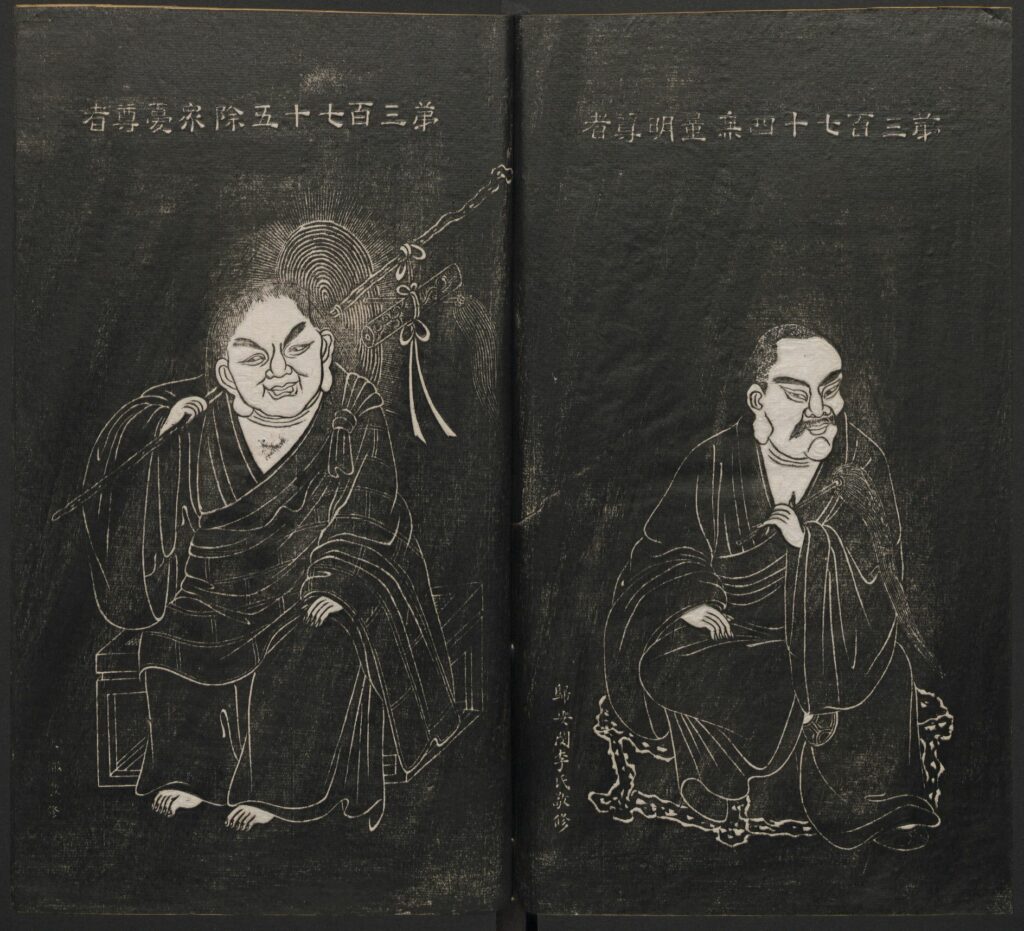



















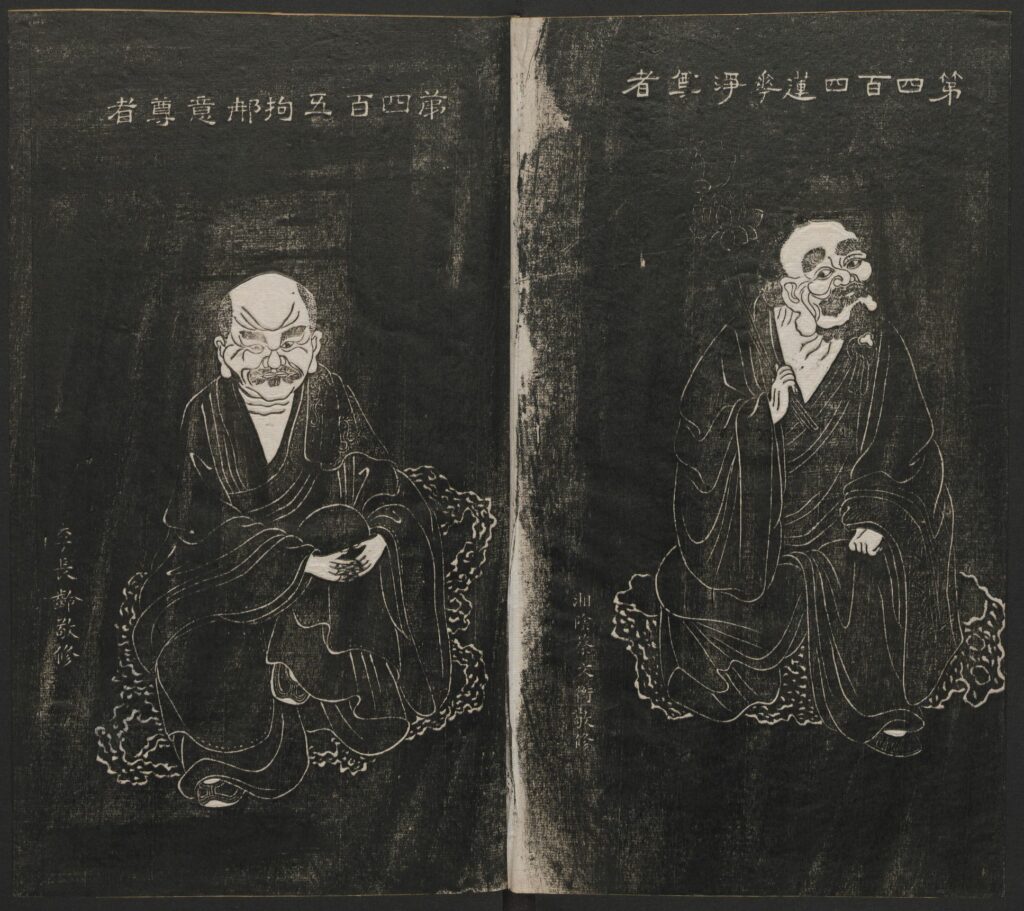


















































Creation万物 Gods神明 284P 五百罗汉像赞.释心月刻. 南岳衡山祝圣寺.清莫拓本
历史上的今天 ( 21 ):
- 2024年-01月-06日:Video视频:中外结合的情侣很幸福
- 2024年-01月-06日:Video视频:泰国性感的理发店
- 2024年-01月-06日:Video视频:声优声音很销魂
- 2024年-01月-06日:Video视频:听话的美女,帮拿下手机
- 2024年-01月-06日:Video视频:调戏一下空姐
- 2024年-01月-06日:Video视频:地狱拳击赛
- 2024年-01月-06日:Video视频:她是魔鬼,有魔鬼身材
- 2024年-01月-06日:Video视频:大过年的,谁又撒钱了
- 2024年-01月-06日:Video视频:真不懂怜香惜玉
- 2024年-01月-06日:Video视频:台湾妹子特开放
- 2024年-01月-06日:Video视频:大胸做俯卧撑,会弹起来
- 2024年-01月-06日:Video视频:这么性感的她,你喜欢吗?
- 2024年-01月-06日:Video视频:为什么,他一次可以亲两个人
- 2024年-01月-06日:Video视频:按摩女,力道太小了
- 2024年-01月-06日:Video视频:奶白奶白很性感
- 2024年-01月-06日:Video视频:流行模仿男生吗?
- 2024年-01月-06日:Video视频:老头痴迷会所美女
- 2024年-01月-06日:Video视频:金钱的力量,无敌了
- 2024年-01月-06日:Video视频:知道是地瓜,女生很失望
- 2024年-01月-06日:Video视频:景甜说,女明星要靠山的
- 2024年-01月-06日:News新闻:2024年1月6日新闻简报(国内国际)
可点 ➠ 2023年-01月-06日 ➠ 106 s ➠ ♥ 0

